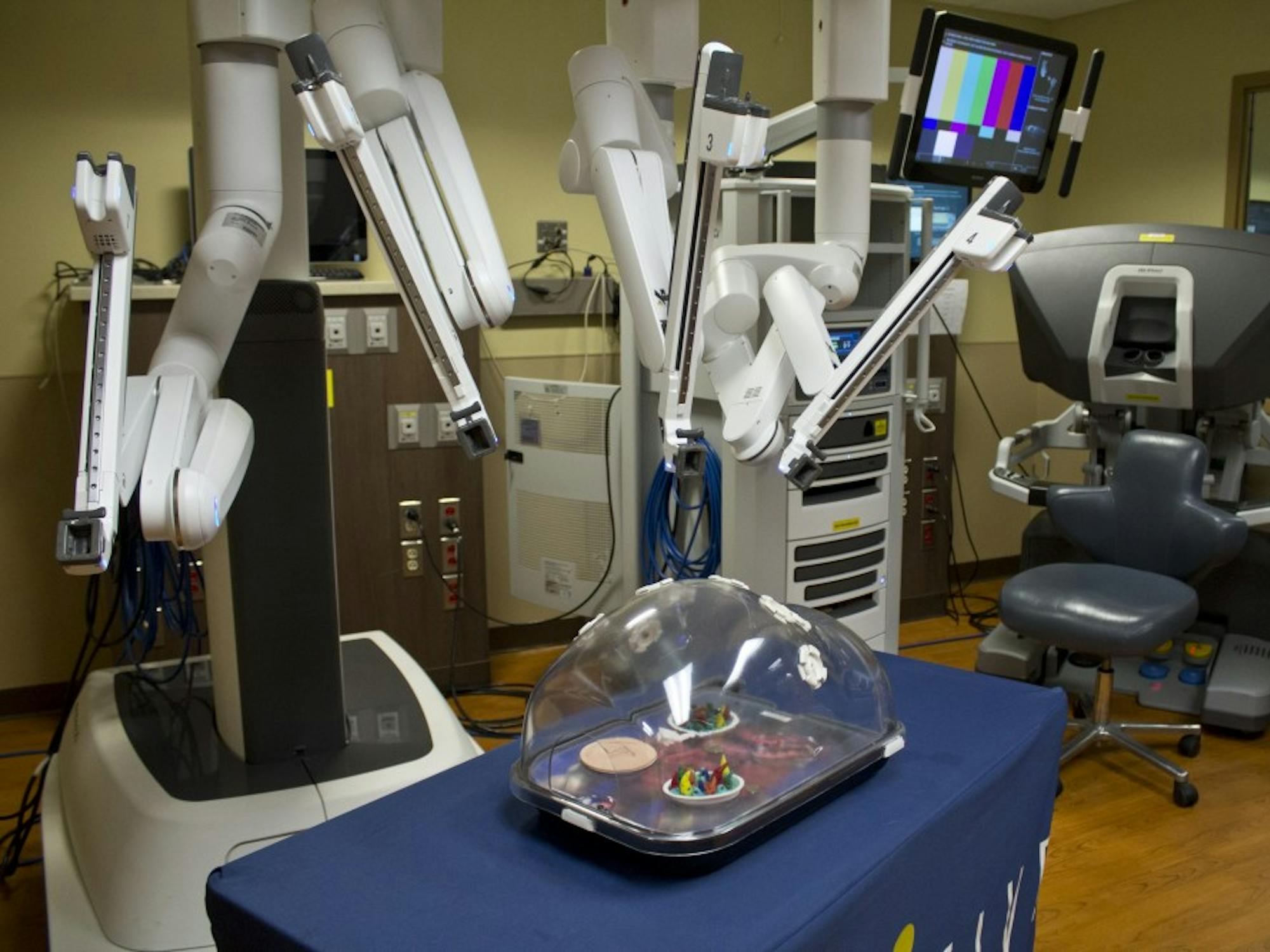St. Joseph Mercy Health System has partnered with EMU’s Nursing Program to provide an environment to accurately prepare nurses for the future in their careers.
Located in the Administrative Building on the hospital’s main campus, students see firsthand what a hospital floor looks and feels like. They are also given hands-on training for their degree.
Each room in the Clinical Simulation Center has a different medical scenario, complete with high tech robots, specialty equipment, hospital beds and other topics to cover in training. The students work in groups to diagnose the robot or to show what is going on during the simulation. They work together to identify what medical situation is occurring.
Participating in this kind of interactive learning environment gives students a chance to feel like they are actually working in their field rather than just reading about it.
Studies show that a hands-on environment, such as the one SJMHS is offering to the EMU students is scientifically proven to improve the quality of remembrance and skill.
Dropoutprevention.org says “There are a variety of active learning teaching strategies: cooperative learning, learning styles theory, multiple intelligences theory, and project-based learning. Cooperative learning is a structured experience in which students work together to achieve a common goal. The basic elements of cooperative learning are positive interdependence, individual accountability, equal participation, and simultaneous interaction.”
Being able to have a real hospital setting devoted to live action learning will be beneficial to those students who absorb information better by doing the actual work.
Michael Williams, Director of Eastern Michigan University’s Nursing Program believes that this collaboration is vital to the students. It gives them the availability to the current technologies available.
“It’s perfect for simulation because it’s in a hospital,” Williams said.
The students are able to have access to technologies that EMU may not have had access to due to financial restraints of the program. For example, one of the most intriguing pieces of equipment available for study is a da Vinci Surgical System, which is used in minimally invasive surgery.
The knowledge of equipment like this will be extremely helpful for surgical nurses to be aware of because it is the up and coming technologies in use at the most advanced hospitals in the U.S.
Williams said that the program has just signed a partnership with SJMHS to strengthen connections with prepared nurse graduates by giving them a Post-Study Transition Residency Program in addition to the initial training program. This gives them the opportunity to have a monitored transition from an Advanced Beginning Nurse to a Professional Nurse in a clinical environment.
To learn more about the program that Eastern has to offer for nursing, please visit http://www.emich.edu/chhs/nursing/.










